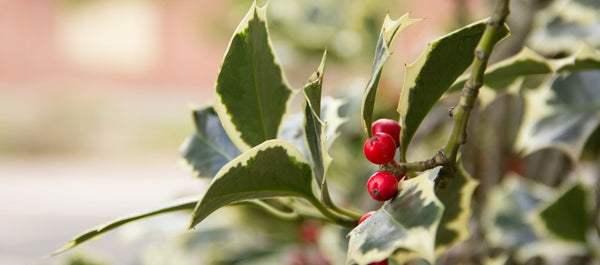By Cindy King, CPH, The Mill
The genus Ilex consists of over 400 species of both deciduous and evergreen shrubs and trees. Leaves are often spiny and glossy with berries along the stem or in clusters. Birds are attracted to the berries as a late winter food as freezing releases the simple sugars.
Hollies prefer a moist well-draining high humus containing soil in full to part sun. Plant or transplant in very early spring or very early fall. Prune in late winter or early spring, and light trimming can be done after new growth is present in early summer.
Some issues with hollies are aphids, scale, leaf miners, sooty mold, and root rot. Make sure that you plant in the correct environment with proper soil chemistry and provide water when needed. Air circulation also limits many issues – therefore hollies like to be out in the open versus along a tight foundation planting.
The hollies that The Mill may carry are listed below – inventory changes constantly. Most are available from the Mill of Kingstown.
Ilex verticillata – Winterberry Holly
Ilex aquifolium - English Holly
Ilex glabra – Gallberry
Ilex meserveae - Blue Holly
Ilex ‘Nellie R Stevens’ – Nellie Steven’s Holly
Iles cornuta – Chinese Holly
Ilex opaca – American Holly
Ilex crenata – Japanese Holly
Ilex vomitoria – Yaupon Holly
























